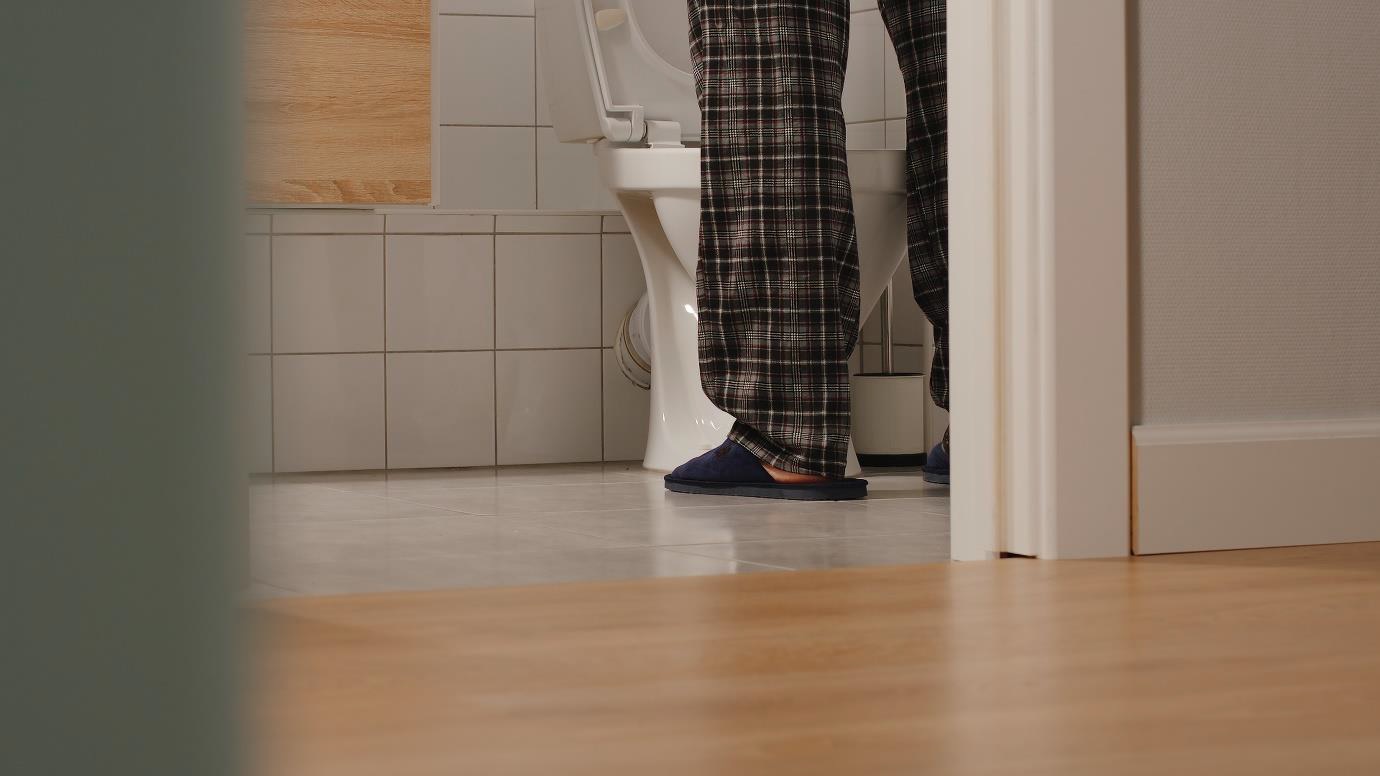Categories:
Slow urine stream? It could be an enlarged prostate
As you get older, the pace of life tends to slow down. And sometimes that’s OK. Maybe you take a little extra time in the morning to enjoy your cup of coffee or opt for the scenic route on your commute to work.
But when it comes to your urine stream, slowing down doesn’t have to be just another part of the aging process. Let’s take a look at the causes of a slow urine stream and which steps you can take to fix them.
What causes a slow urine stream?
There’s more than one possible cause for a slow urine stream.
But for older men, a likely culprit is an enlarged prostate, also known as BPH or Benign Prostatic Hyperplasia. More than 40% of men in their 50s and nearly 90% of men in their 80s have an enlarged prostate¹, over 660 million men worldwide are affected by BPH.1,2
How severe are your enlarged prostate symptoms?
Get your Prostate Symptom Score in two minutes.
Enlarged prostate: Signs and symptoms
The prostate is a small, walnut-sized organ that sits below your bladder and surrounds your urethra. As part of the male reproductive system, the prostate is responsible for producing a component of the fluid that’s released as semen during ejaculation.
However, beginning around the ages of 45-50, the prostate starts to grow in size. This is a normal part of aging. Let’s take a look at some of the symptoms of an enlarged prostate which can greatly affect a man’s quality of life:
Basic symptoms
When your prostate grows in size, it may begin to block the urethra, which is the body’s exit point for urine. This causes urinary symptoms3 including:
- A weak or slow urine stream
- An urgent need to urinate
- Increased frequency of urination, both day and night
- Difficulty starting your urine stream
- The need to push or strain when urinating
- A sense that you cannot completely empty your bladder
Advanced symptoms
If left untreated, more severe symptoms can sometimes develop: Your bladder can even become permanently damaged if you allow your enlarged prostate to progress untreated. 4
The next steps
If you’re experiencing symptoms like a slow urine stream, it’s important to take the next steps and address the underlying cause. But how do you know if your symptoms are severe enough to warrant treatment?
Take our quiz to find your enlarged prostate symptom score. Your score will give you a better understanding of the severity of your symptoms.
If you’re thinking about seeking treatment, it’s important to know your options. Treatment options for an enlarged prostate fall on a spectrum ranging from the least invasive to the most invasive.
Non-Invasive
Medication & Monitoring
Alpha-blockers can help relax the muscles around the neck of the bladder to aid urination, while alpha-reductase inhibitors can help to shrink the prostate.
Patients need to continue taking medication to manage their condition, which may lead to side effects including dizziness, fatigue, and sexual dysfunction.5,6
Minimally Invasive
Prostatic Urethral Lift (PUL)
A straightforward procedure that deploys small implants to lift and compress the sides of the prostate to make the urethra wider and increase the flow of urine.
PUL does not require heating, cutting, removal, or destruction of prostate tissue.5,7-11 It is shown to not cause new and lasting sexual dysfunction.*5,12-15 Most common side effects are
temporary and include haematuria, dysuria, micturition urgency, pelvic pain, and urge incontinence.7
Thermotherapies & Lasers
A minimally invasive procedure involving the removal of prostate tissue via heat and steam to relieve symptoms.
Patients often need to have a catheter inserted into their bladder during the recovery process.9,16
This procedure also has incidences of erectile and/or ejaculatory dysfunction.,5,9,15,17
Most Invasive
Surgery
Transurethral resection of the prostate (TURP) involves using a superheated thin metal band to cut and remove prostate tissue. In severe cases with very large prostate or complications, open surgery is needed to reach the prostate.
Surgery requires recovery in the hospital with a catheter inserted into the bladder.18 Surgery also has higher incidences of bleeding, erectile and/or ejaculatory dysfunction.5
Closing thoughts
If you’re a man over the age of 50 and experiencing a slow urine stream, an enlarged prostate may be the culprit. An enlarged prostate, or BPH, is a common condition, but don’t wait for your symptoms to get worse. Take action by finding your enlarged prostate symptom score.
Find out more about the BPH treatment options here.



